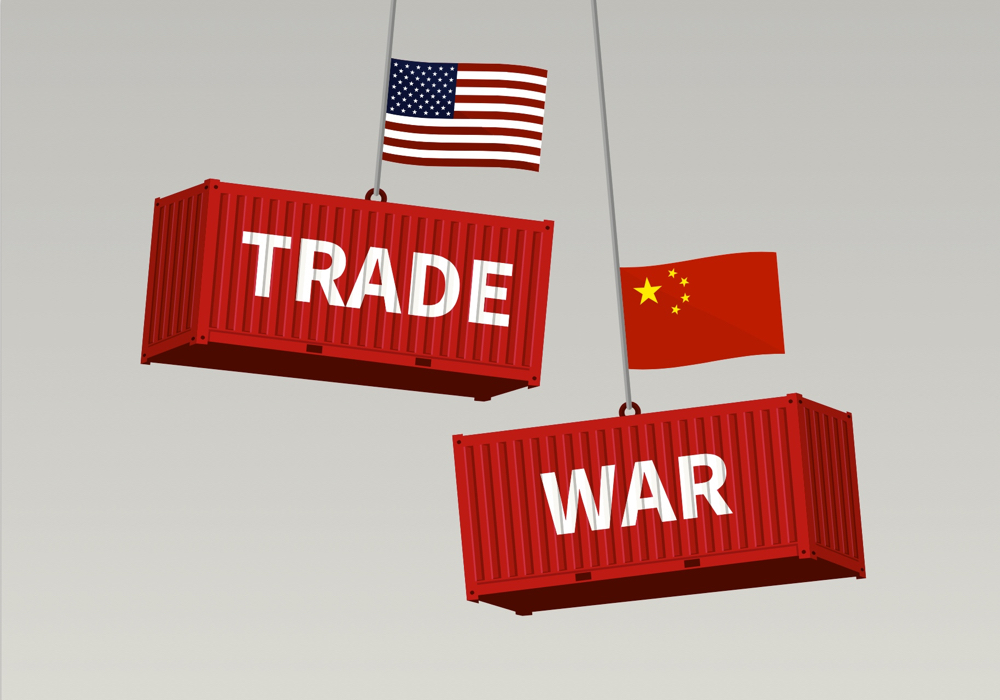Beijing | Reuters – The United States and China imposed fresh tariffs on each other’s goods Sept. 24 as the world’s biggest economies showed no signs of backing down from an increasingly bitter trade dispute that is expected to knock back global economic growth.
Soon after the new duties went into effect, China accused the U.S. of engaging in “trade bullyism” and said it was intimidating other countries to submit to its will, the official Xinhua news agency said, reiterating China’s willingness to fight if necessary.
Read Also

Ontario’s other economic engine: agriculture and food
Ontario Federation of Agriculture president, Drew Spoelstra, says Ontario’s agriculture and agri-food sector should be recognized for its stability and economic driving force.
But Beijing also said it was willing to restart trade negotiations with the United States if the talks are “based on mutual respect and equality,” Xinhua said, citing a white paper on the dispute published by China’s state council.
Why it matters: As the U.S.-China trade war rages on, a global economic slowdown is becoming more possible every day.
U.S. tariffs on $200 billion worth of Chinese goods and retaliatory tariffs by Beijing on $60 billion worth of U.S. products took effect at midday Asian time, though the initial level of the duties was not as high as earlier feared.
Stocks on Wall Street opened lower. Boeing, the biggest U.S. exporter to China, dropped one per cent and Caterpillar 0.5 per cent, leading the losers on the Dow Jones Industrial Average. Network equipment makers Cisco and Netgear were also lower.
“One of the bigger risks with these tariffs going into effect is that the United States may be pushed out of the Chinese market and it is a growing market,” said Scott Brown, chief economist at Raymond James in St. Petersburg, Florida.
Moody’s said additional U.S. tariffs on Chinese imports are negative for various sectors in both countries and could spread beyond targeted sectors, adding that tariffs are credit negative for U.S. furniture and home goods retailers, with more than half their imports coming from China last year.
The U.S. will levy tariffs of 10 per cent initially, rising to 25 per cent at the end of 2018. Beijing has imposed rates of five to 10 per cent and warned it would respond to any rise in U.S. tariffs on Chinese products.
The two sides had already slapped tariffs on $50 billion worth of each other’s goods.
For U.S. consumers, the new duties could translate into higher prices for Chinese products ranging from vacuum cleaners to technology gear such as home modems and routers, while U.S. goods targeted by Beijing include liquefied natural gas and certain types of aircraft.
U.S. President Donald Trump is pressing China to reduce its huge trade surplus with the U.S. and make sweeping changes to its policies on trade, technology transfers and high-tech industrial subsidies. Beijing has denied that U.S. firms are forced to transfer technology and sees Washington’s demands on rolling back its industrial policies as an attempt to contain China’s economic rise.
The U.S. administration “has brazenly preached unilateralism, protectionism and economic hegemony, making false accusations against many countries and regions, particularly China, intimidating other countries through economic measures such as imposing tariffs,” Xinhua quoted the state council’s white paper as saying.
Several rounds of Sino-U.S. trade talks in recent months have yielded no major breakthroughs and attempts at arranging another meeting in coming weeks have fallen through.
Economists warn that a protracted dispute will eventually stunt growth across the globe. Companies on both sides of the Pacific are already reporting disruptions to their operations and are reviewing investment plans.
The trade tensions have also cast a pall over broader relations between Beijing and Washington, with the two sides butting heads on a growing number of issues.
China summoned the U.S. ambassador in Beijing and postponed military talks in protest against a U.S. decision to sanction a Chinese military agency and its director for buying Russian fighter jets and a missile system.
Rob Carnell, ING’s chief Asia economist, said in a note to clients that in the absence of any incentives Beijing would likely hold off on any further negotiations for now.
“It would look weak both to the U.S. and at home,” he said, adding that there is “sufficient stimulus in the pipeline” to limit the damage of the latest tariffs on China’s economy.
“The U.S.-China trade war has no clear end in sight.”
China may also be waiting for U.S. mid-term elections early next month for any hints of changes in Washington’s policy stance, Carnell added.
“With generic polls favouring the Democrats, they may feel that the trade environment will be less hostile after Nov. 6.”












